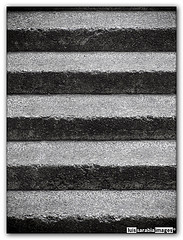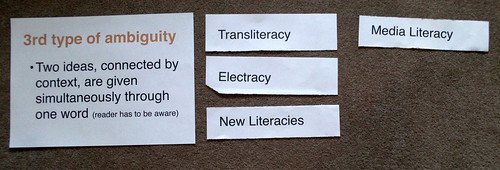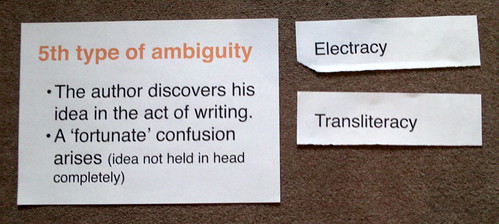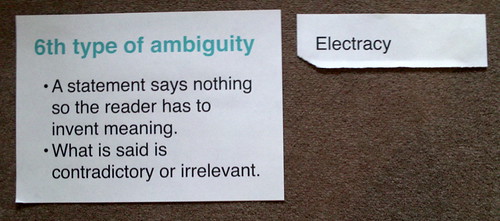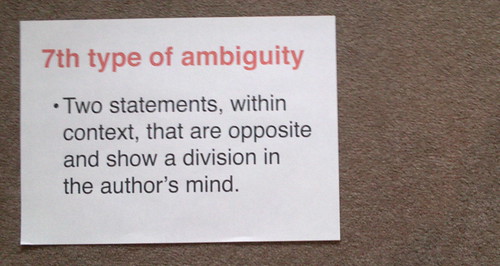Seven types of ambiguity and new literacies
Some people talk of ‘learning styles’ but I think that, really, we use each main type of style (kinaesthetic, visual, aural) depending on what it is we’re learning. In fact, as a teacher, I’ve observed this in the classroom.
Those (high-flyers) who have the groundwork understanding to quickly assimilate concepts need merely aural input to learn effectively.
Those (most of the class) who need some consolidation of the groundwork before assimilation need things explained visually.
Those (SEN, etc) who need to re-explain the groundwork completely before moving on need kinaesthetic activities.
Feel free to shoot me down, but that what I’ve observed. And the same is true for my own learning.
At the moment I’m trying to apply Empson’s Seven Types of Ambiguity to my Ed.D. thesis. Specifically, I’m interested in finding out how terms such as ‘digital literacy’ and ‘electracy’ are ambiguous. It’s confusing. So I did my equivalent of breaking out the Duplo:
Note that this is visual learning for you but kinaesthetic for me – I did something similar when doing my MA.
Thoughts/comments? Do you do something similar? :-p

